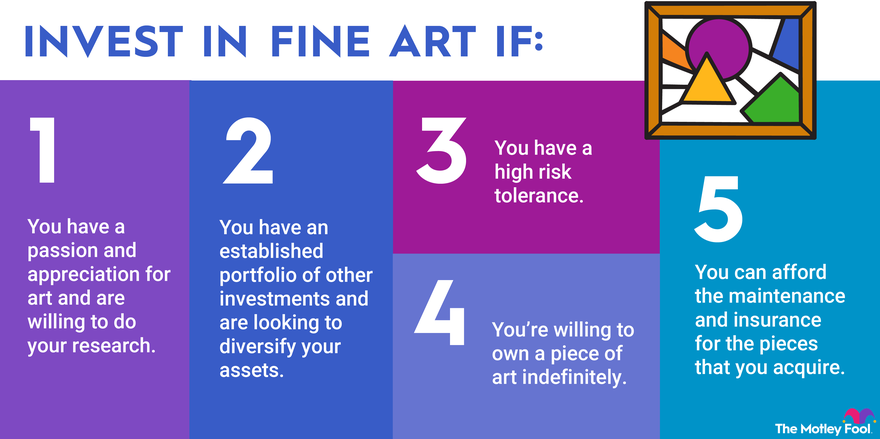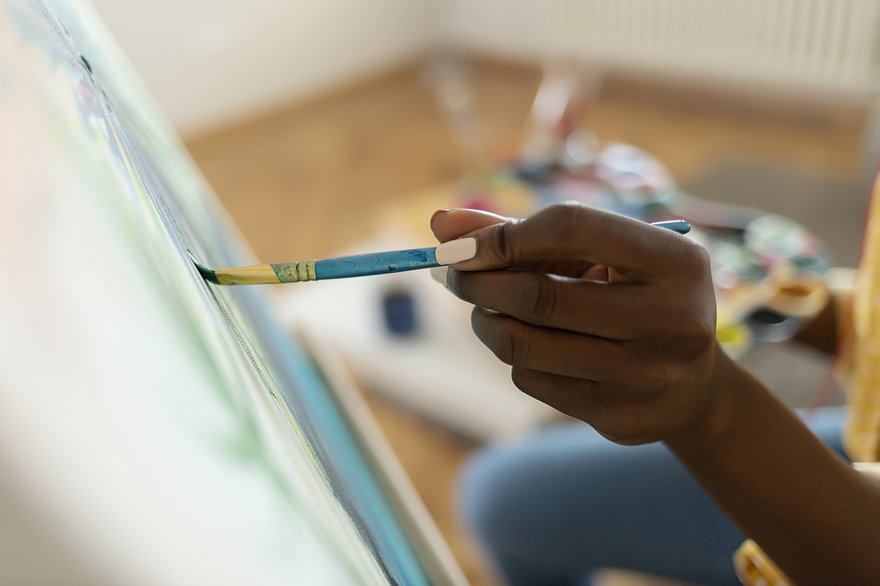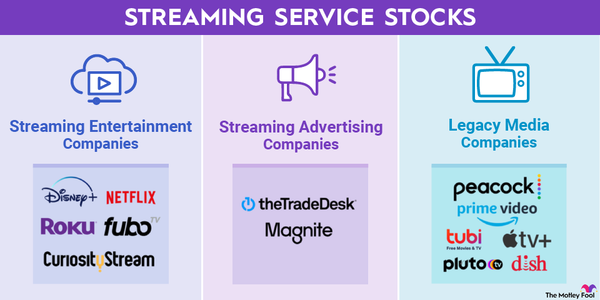Diversifying your investments isn't just about wisely balancing your portfolio between stocks and bonds. Alternative assets such as fine art might have a place in your portfolio as well.
Art collecting and investment is no longer limited to the wealthy elite. If you’re interested in art, then you can diversify your assets and even find something nice to hang on the wall. At the very least, your investment will look a heck of a lot better than a stock certificate.

Is art a good investment?
Is art a good investment?
Despite the high costs often associated with investing in art, it still could deserve a spot in your portfolio.
The art market is not highly correlated with the stock or bond markets. That's exactly what investors should be looking for when diversifying their assets. No matter what the financial markets are doing -- moving up or trending down -- the art market isn't affected very much. While both stocks and bonds were declining in the first half of 2022, art auctions were setting new record prices.
In 2020, the art market faced a challenging environment when in-person auctions were canceled due to the COVID-19 pandemic. Turnover in contemporary art fell 34%, and many auctions and galleries shifted online, which helped things bounce back. Turnover and transactions reached a new all-time high, and more artworks were sold than ever before.
As we face the highest inflation rates we’ve seen in 40 years, art can serve as a good hedge against inflation. People with a lot of cash on hand are looking to buy hard assets such as art or real estate to protect their wealth. As a result, we’ve seen strong increases in auction values during recent high inflation.
The trend bodes well for the future of art as an investment. Still, investors should be wary of being enticed by the high returns they could theoretically earn by investing in fine art.
It's possible to generate positive returns from investing in art by being selective, diversifying your collection, and holding pieces for the long term. Art investors should expect returns more comparable to those of bonds and not the market-beating returns touted by the art indices.
What to know before investing
What to know before investing in art
When you invest in a piece of art, you're buying it with the expectation that demand for that piece or similar pieces will increase faster than the supply. If that happens, then the value of the piece will increase, and you may be able to sell it for a profit.
That's easier said than done.
- Choosing an artist can be difficult. You're unlikely to discover the next big artist before they've earned a reputation and start commanding high prices for their work. And, sad as it may be, works by living artists don't fetch the same prices at auction as pieces by those who have passed away. You also can't just go down to your local antique store and find a real Monet, Modigliani, Matisse, or Munch on sale for a few bucks. Buying work by one of those artists at auction would cost millions.
- You may have to hold your art for a while. Even when you manage to acquire a piece that increases in value, the art market is relatively illiquid. You'd typically have to wait to sell, and you'll incur high fees to a broker or auction house to liquidate your holdings if you want to cash in on your investment.
- Art requires maintenance. Art is typically a tangible, hard asset. Unlike intangible assets such as retirement accounts, art takes up physical space. Care and maintenance are required to ensure that the art retains its value. If you're displaying the art in your home, then you'll need to be mindful of temperature, humidity, sunlight, and various other factors that could degrade the work. For a fee, you can opt to have a storage company keep the work in a climate-controlled environment.
Various other costs to consider with the purchase and sale of artwork include sales tax, transportation expenses, authentication and appraisal fees, and insurance. You may also want to buy a nice frame or another type of display mechanism for your artwork.
How to start investing
How to make your first investment in art
You can easily find art to purchase at galleries and auction houses (both physical and online). You might also check out local art fairs. Online magazines and social media channels such as Instagram can help you discover artists you like, and you can buy works directly from artists’ websites. Or you might dive into the world of NFTs, which represent ownership of digital art.
There are several ways to invest in art, each with varying degrees of risk and reward.
- High risk and high price tag: You can buy original works at auctions, galleries, and art fairs; however, doing so comes with the highest price tag and highest amount of risk. You can try to buy works by an up-and-coming artist, hoping you've found the next Banksy. A one-of-a-kind painting or sculpture could someday be worth much more than what you paid, or you may have trouble reselling it.
- Low risk and low price tag: Instead of buying an original, you could opt to buy a print of an original painting or drawing. Many artists and galleries will make limited-edition prints of some works and give collectors the opportunity to buy a print at a set retail price on their website. A high-quality, limited-edition print can be very valuable and costs a fraction of the price of the original. But, since prints usually aren't unique, they don't increase in value in the same way as the originals.
- Low risk and high price tag: You can buy pieces by "blue-chip" artists such as Andy Warhol, which generally hold their value better but offer less capital appreciation or upside. Blue-chip artists are those whose works have the most stable value and are not subject to fashions and speculation. Many first-time investors can’t afford to buy a blue-chip painting or sculpture, but several funds enable investors to buy shares in a holding company that will buy a blue-chip piece of art. (More on that below.)
Importantly, if you're going to buy individual works of art, you probably want to buy works that make you happy. If you invest $10,000 in a painting that you think is ugly just because you expect its value to rise, then you're missing out on the fun part of investing in art versus other asset classes.

Other ways to invest
Other ways to invest in art
If you don't want the hassle of owning a piece of art, it's still possible to invest in artwork without taking possession of the physical asset.
Art funds, which are structured much like other investment funds, allow investors to partially own pieces of art. MasterWorks, for example, is a fund manager that acquires blue-chip art at auctions on behalf of its investors. It creates a holding company for each piece of art to acquire it, store it, promote it, and resell it for profit. It registers the company with the Securities and Exchange Commission and issues shares to people who want to invest in a specific piece of art.
Securitizing artwork in this way makes investing in art more accessible and the market for the artworks' shares more liquid. Investors can buy and sell shares much more easily than buying and selling the actual pieces of artwork.
Firms such as MasterWorks conduct the research to identify artworks with a good chance of increasing in value, and they oversee the maintenance required to keep the artworks in pristine condition. However, their investors pay a fee for the service, and they don't get to physically take possession of the art.
Unfortunately, there is no such thing as an art exchange-traded fund (ETF) or mutual fund. Focusing an ETF or mutual fund on art is impractical due to the illiquid nature of the art market. Art's singularity and inherent scarcity prevent fund managers from simply buying more Renoir or Basquiat paintings to satisfy increasing investor demand. Similarly, if many shareholders of an art fund wanted to redeem their shares, then the illiquidity of the art market would prevent the manager from easily selling the fund's assets.
Unfortunately, there is no such thing as an art exchange-traded fund (ETF) or mutual fund.
The art indices
Firms such as Sotheby's and Christie's that sell art as investments will often cite Art Market Research's Art 100 Index to justify their starting bids. The index, which tracks sales of 100 artists across various regions, styles, and periods from 22 auction houses around the world, can convey a broad sense of how the global market for artwork is performing.
In 2018, Artprice launched its Artprice100 Index, which focuses on blue-chip artists. The company says the index grew at an average annual rate of 8.9% from 2000 through 2017. Meanwhile, the S&P 500 grew at less than half that rate during the same period (which, notably, starts just before the dot-com bubble popped and includes the Great Recession). However, the S&P 500 outperformed the Artprice100 every year from 2015 through 2020. The index outperformed in 2021, and, while the data isn’t out yet, it likely outperformed in the first half of 2022 as well.
There are a couple of problems with these art-focused indices, though. First, they only account for the auction prices of the artworks sold. All of the costs associated with investing in artwork are disregarded. The sale price of a piece may not generate any profit if the art is sold at a price lower than the amount of the up-front costs (including sales tax, transportation, and appraisal).
The second problem is a phenomenon called "selection bias." Art market prices don't update every moment or day like the prices of securities traded in the financial markets. Art indices are based on the available auction data. If a piece of art never sells, then there's no data. And the works that aren't going up for auction are often worth less than the most recent selling price, making the indices’ record returns greater than the overall art market. The indices are biased to only account for the winners.
Related investing topics
Where to find art to buy
You can find art for sale just about anywhere. You could walk down to your favorite local coffee shop, and there's a good chance you'd see some art hanging on the walls that you could purchase.
- Brick-and-mortar galleries: Investors looking for art shouldn't ignore art galleries. To make a profit, they charge a hefty markup, which investors may see as wasted money. But galleries also provide the service of promoting an artist and getting their works into museums. Their investment in an artist is a sign that the gallery views the work as a valuable contribution to the arts. The artwork, therefore, likely has more monetary value than a painting on the wall at the coffee shop.
- Online galleries and auction houses: You can also buy art over the internet either through an online gallery or online auction house. The big names -- Sotheby's, Christie's, and others -- accept online bids. You can also find smaller, exclusive online galleries and auctions via a simple web search. Be sure to research the reputation of any online art dealer before you bid or buy. Many artists also sell directly to customers through their own websites.
Who should (and shouldn't) invest in fine art?
Here are a few more things to consider before you decide to commit your money to investing in artwork.
Investing in fine art may be a good fit for you if:
- You have a passion and appreciation for art and are willing to do your research.
- You have an established portfolio of other investments and are looking to diversify your assets.
- You have a high risk tolerance.
- You're willing to own a piece of art indefinitely.
- You can afford the maintenance and insurance for the pieces you acquire.
Avoid art as an investment if:
- You're expecting returns that outpace the stock market.
- You have no interest in displaying the works that you buy.
- You want to be able to liquidate your holdings quickly and easily.
Investing in art isn't for everyone. It carries a lot of risk, and investors shouldn't expect huge returns, even from a diversified collection of works. But if you buy artwork that makes you happy, at the very least you'll own pieces that you love and can proudly display. If any of your artwork substantially increases in value, then you can sell those pieces for a handsome profit and use the proceeds to redecorate.











